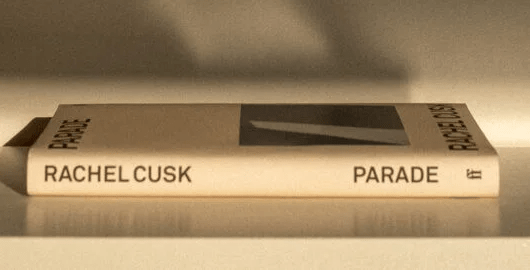Upside down art: Rachel Cusk turns fiction on its head in Parade

Everyone is imagined! Parade questions the viability of character, finds Lucy Kenningham
It is an arresting image. The artist paints his pieces upside down. At first sight the paintings looked as though they had been hung the wrong way round by mistake, but for a signature demarcating the bottom right hand corner. This inversion heralds – in his work – “the advent of a new reality”. Critics are confounded. And convulsing with praise. But they are silent on what seems to be an urgent question: does he paint conventionally, and then turn the canvas upside down in an unskilled, absurdist joke? Or does he paint upside down in what would presumably constitute a “formidable technical challenge”? No one dares ask.
The upside down paintings are a way for the artist to make “sense of his time and place in history”. It is not a dissimilar task to that which Cusk – one of Britain’s most celebrated and criticised contemporary authors – has been attempting in her novels, of which Parade is the 12th.
For haven’t you heard? The traditional novel – Dickens or Austen – is dead. It had a plot, a narrative and characters. But how can these structures really represent the human experience? Aren’t they a little too neat? Fighting back against the traditional novel, Cusk’s fiction, which often features thinly-veiled versions of herself, has been both praised for its innovation and criticised for its self obsession (in a manner many would call sexist), though mostly the former. Cusk has moulded the boundaries of form and character: her highly successful Outline trilogy tracked a near-nameless narrator throughout the aftermath of her divorce and remarriage – though the plot of her life is barely mentioned, as conversations deriving from other characters make up most of the book. It is through her recollection of others’ stories that the reader weaves a tapestry of the narrator’s own identity. The novels defy a neat description of anyone. What are we all but fragments, as seen by individuals, at moments in time, anyway?
What are we all but fragments, as seen by individuals, at moments in time, anyway?
Indeed, this idea is unforgettably visualised in the novel. Writhing in jealousy at her nanny’s relationship with her child, a working artist mother panics at losing her daughter. “It gave G a strange sensation, to see her child full of another woman’s stories, as she might have been full of another woman’s milk.”
Cusk fans will find some of the same dream-like story-telling in Parade, a novel which has a similar disregard for plot. But this time Cusk goes further. All the artists who parade around the book are different characters yet share the initial G as their identifier. There is no real narrative journey, merely the backgrounds of the ideas of various European cities and people within them. The artists’ various stories swirl around tackling typical Cuskian themes – motherhood, the responsibility of an artist, shame, marriage, losing a parent.
Although the themes are recognisable, the book is not a rehash of any previous works; there being a satisfying sense of development away from the Cusk-like central narrator who has dominated her most recent work. The artists in Parade are constantly evolving their artwork, creating radically new forms of art. They don’t rely so much on the constraint of technique as ideas. On top of that, their initial provides them with anonymity if they want it.
At a talk in Paris in June, Cusk groaned “I find language really, really tiresome”. She hasn’t put down the pen, but asking these questions is valuable because stories, and imagery, dominate our lives. If they distort our reality and our sense of selves, what does that do to us?
Another Paris-based author told me: “But everyone is imagined!” when I asked her, after Cusk’s talk, whether it was hard to invent characters for her novels. No one is continually “upbeat”, “shy”, “kind” – we are cobbled together snatched moments of ourselves. We are capricious in a way that the traditional storyteller cannot comprehend. That is why visual art – which captures a moment – is such a compelling idea for Cusk.
But alas, words are fated to be her tools. Yet her writing is an example of literature’s great strength: she has pulled the rug of narrative convention from our feet, as a series of stories flutter down at our feet and we are left to gather the pieces together.
Resistant and abrasive to convention as ever – whilst still being a compulsive and accessible read – Parade is another success of fragmentary storytelling.

 Yahoo Finance
Yahoo Finance 